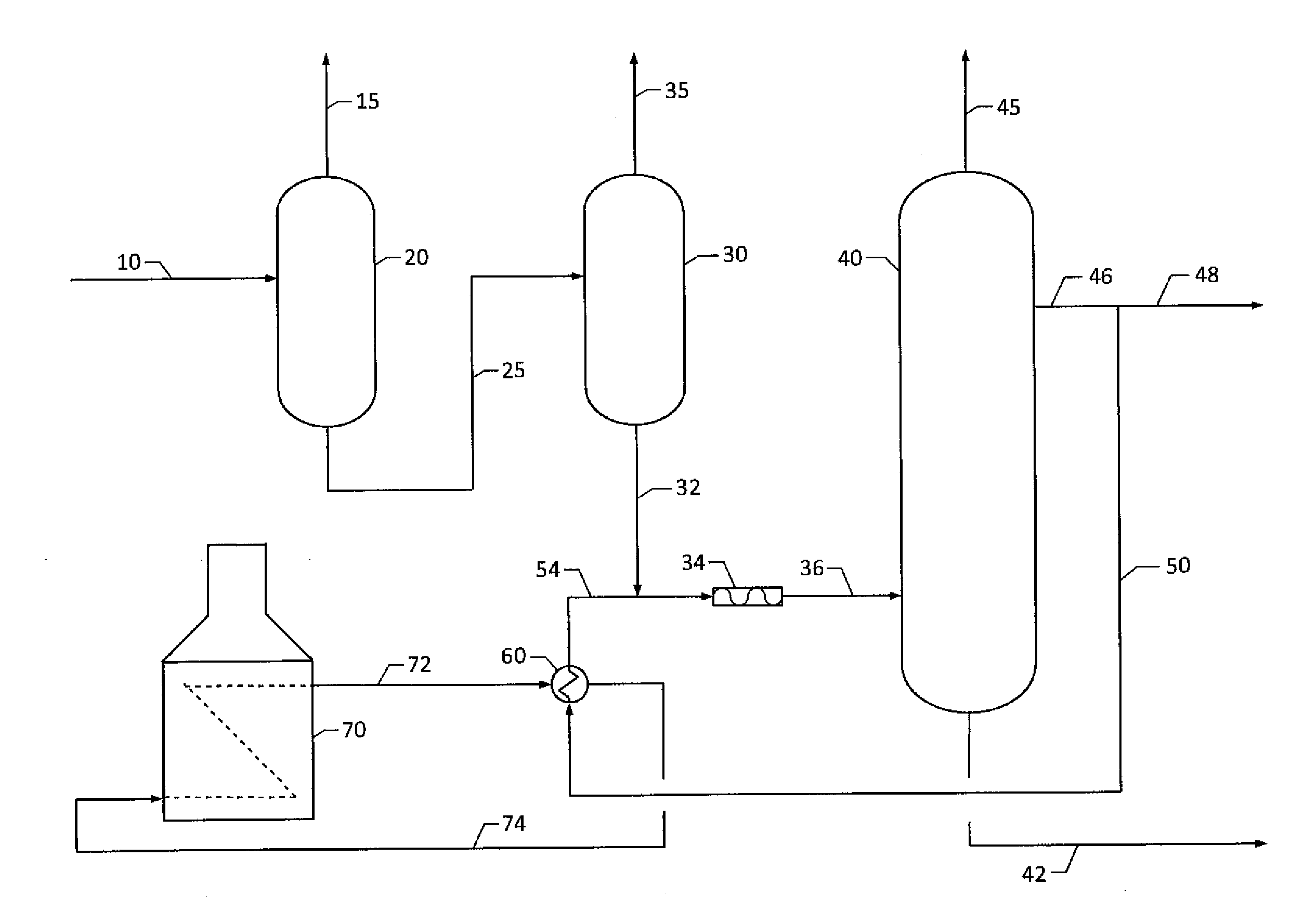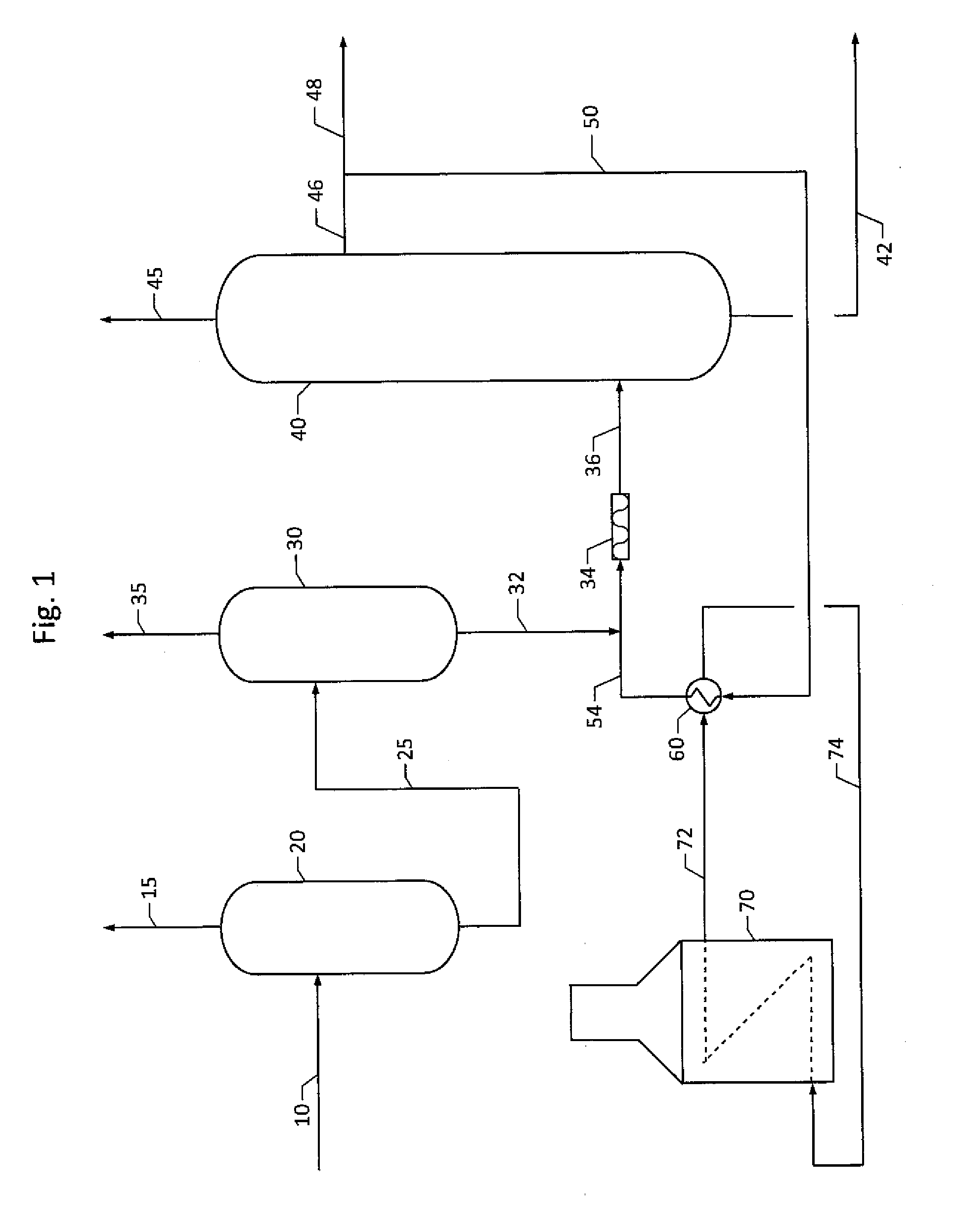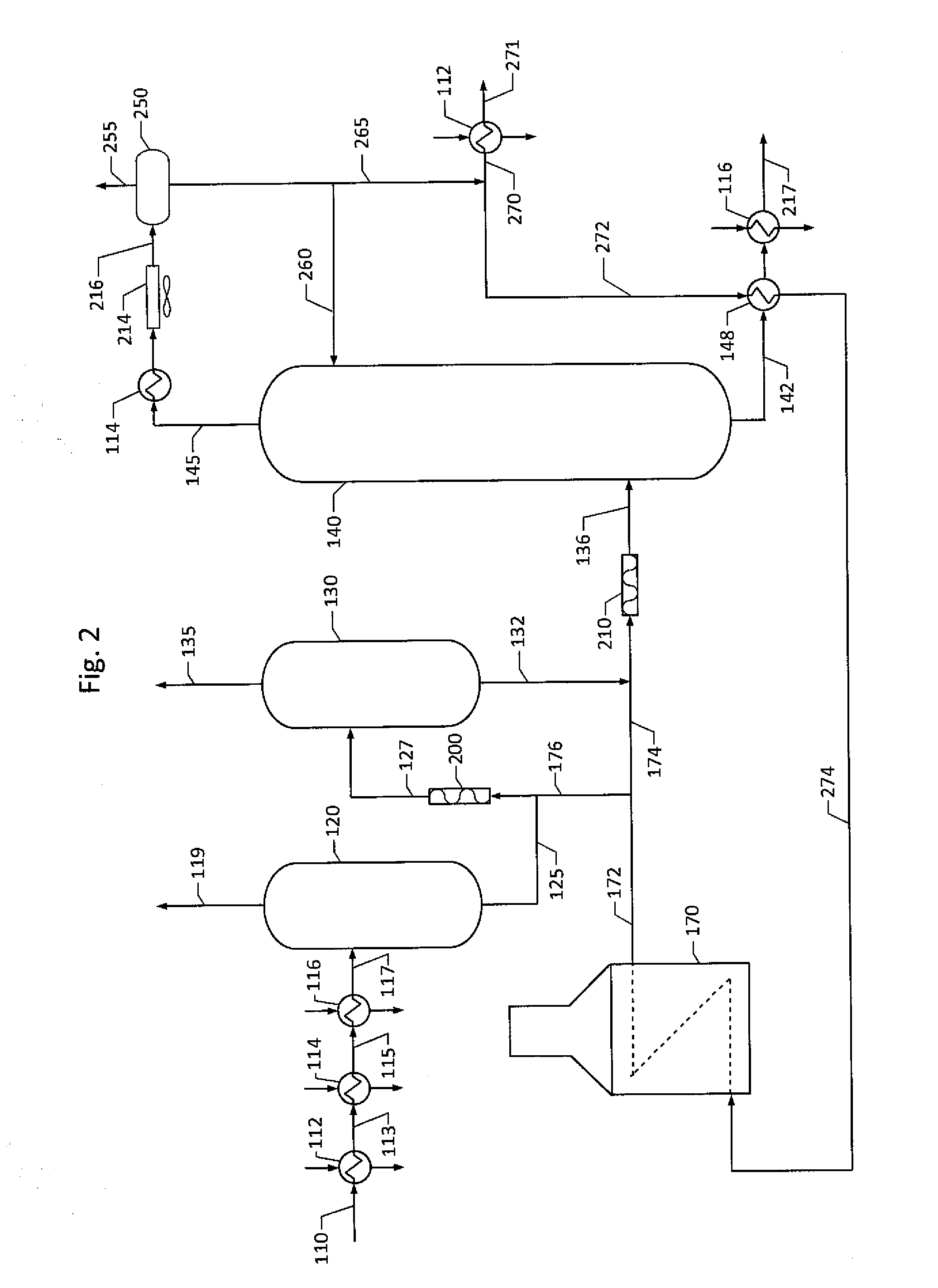Processing used motor oil has been a problem in search of a solution for over fifty years.
It is a problem both in size and technology.
Little of it is recycled or used effectively and much is improperly dumped.
Re-refining is a problem because the very additives which make modern lubricating oils stick to
metal surfaces in an engine greatly complicate
recovery of the
lubricant boiling range hydrocarbons, at least
recovery using commercially viable technology.
The presence of organo-metallics in waste oils such as
zinc dialkylthiophosphate results in
decomposition of the
zinc dialkyldithiophosphate to form a carbonaceous layer rich in zinc and often other metals such as
calcium,
magnesium and other metals present as additives and thus is difficult if not impossible to process.
This layer not only reduces the
heat transfer coefficient of tubular heaters rapidly, it also results in substantial or
total occlusion of these tubes within a few days.
These chemical processes suffer from attendant disposal problems depending on the
metal by-products formed.
Start-up of such a process or perhaps operation may have
encountered problems as the first commercial unit is believed no longer be in operation.
While the extraction approach seems like an elegant solution to the problem of
processing ULO, the process may be relatively expensive to operate.
Their quarterly report of May 15, 2002, reports that “It has become evident that demanding royalties based on production is impractical in many situations and countries.
Unless and until the re-refined oil produced in a
plant can be sold at prices comparable to base lubricating oils, collecting royalties based on production will be difficult.
If coking is used much of the ULO feed ends up as
coke, and there is little distillate boiling range material left and it is of
poor quality.
If extraction and
chemical treatment are used, there is a relatively large amount of distillate liquid produced, but the costs are high.
No process is known which could be considered a commercial success.
Despite the abundance of a potentially valuable
waste material, namely the lubricating oil boiling range hydrocarbons trapped in the ULO, most ULO is not re-refined.
The “state of the art” of used motor
oil processing could be summarized as follows:Chemical additive and extraction approaches can be used to react with or extract everything but zinc additives, but costs associated with such processes are apparently high as evidenced by little commercial use.Indirect heating in a fired heater causes rapid
fouling of metal surfaces.
Using milder heating via a double boiler approach or
molten metal heating medium can minimize but not eliminate
fouling on hot metal surfaces.Direct contact heating with
high pressure hydrogen may eliminate
fouling but requires high capital and operating expenses.Direct contact heating with a recycled bottoms fraction can still suffer from heater fouling.
When steam is the injected vapor, the process can create a water disposal problem and is thermally less efficient because the
latent heat of water is lost when the steam is condensed against cooling water or air in a
heat exchanger.
There are also concerns about possible formation of emulsions or corrosive regions in portions of the
plant when water is condensing.
When a “
working fluid” is used for heating e.g.
propane, the water problem is largely eliminated, but large volumes of vapor are needed to provide sufficient heat input so costs increase to heat and recycle such vapor streams.
The
working fluid approach also calls for a somewhat higher
capital cost, because higher pressure operation is generally needed to facilitate circulation of the large volumes of
working fluid to heat the used lube oil feed.
Brute force heating by recycling a bottoms stream forces at least some of the additive
package to end up in the bottoms which go through a fired heater and cause fouling.
The
brute force approach vaporizes the lubricant boiling range components but can easily degrade the lube components and contaminate them with significant amounts of the breakdown products of the additive
package.
The recovered lube boiling range components will have significant value as fuel or cracker feed blending component but are generally not suitable for use as lubricant blending stock, at least not without a lot of expensive hydrotreating.
Destructive distillation of ULO by spraying it on top of a coker drum decomposes the additive
package and leaves it behind in the
coke, but the valuable paraffinic lubricant boiling range hydrocarbons are converted to coker
naphtha or other reactive and difficult to process fractions.
The lube fraction is arguably “recovered” but is no longer remotely suitable for use as a blending component.
Steam injection for heating of ULO would minimize thermal degradation of lubricant boiling range hydrocarbons in the ULO, but the relatively “wet” approach causes concerns about disposal of waste water,
emulsion formation and / or
plant corrosion.
The “pumped vapor” approach using
propane or the like eliminates most water problems but requires a more complicated plant to recycle the
hydrocarbon vapor.
Condensation and separation of injected heating vapor and recovered lubricating components are somewhat expensive.
Another limitation of some conventional approaches to re-refining ULO which use
vaporization is the residue.
These aromatic materials were hard to process in the FCC unit because the aromatics were very thermally stable.
When aromatic rich liquids such as a
cycle oil or
slurry oil from an FCC unit are used for ULO re-refining, the resulting product is somewhat less desirable as a cracker feed because of the high aromatic content.
The multi-ring aromatics typically in such FCC streams do not become easier to crack because of the presence of significant amounts of aliphatic lube components, but the mixture still has significant value as cracker feed stock.
The only drawback to use of this material is that the highly paraffinic lube stock is readily cracked both thermally and catalytically.
Such modestly cracked streams with some olefins but few dienes may be processed easily using conventional
refinery technology, whereas severely cracked streams with high
diene content require extra and expensive
processing to make them stable enough for further processing.
 Login to View More
Login to View More 


